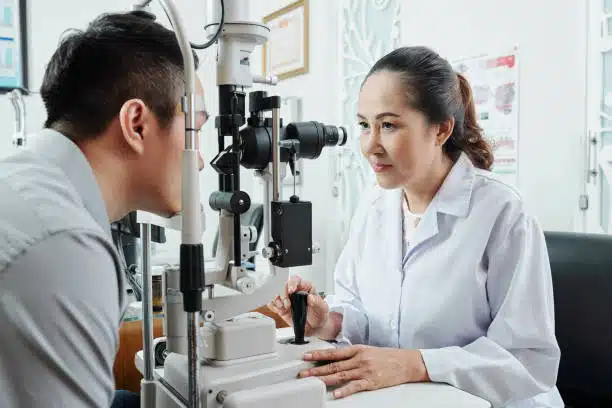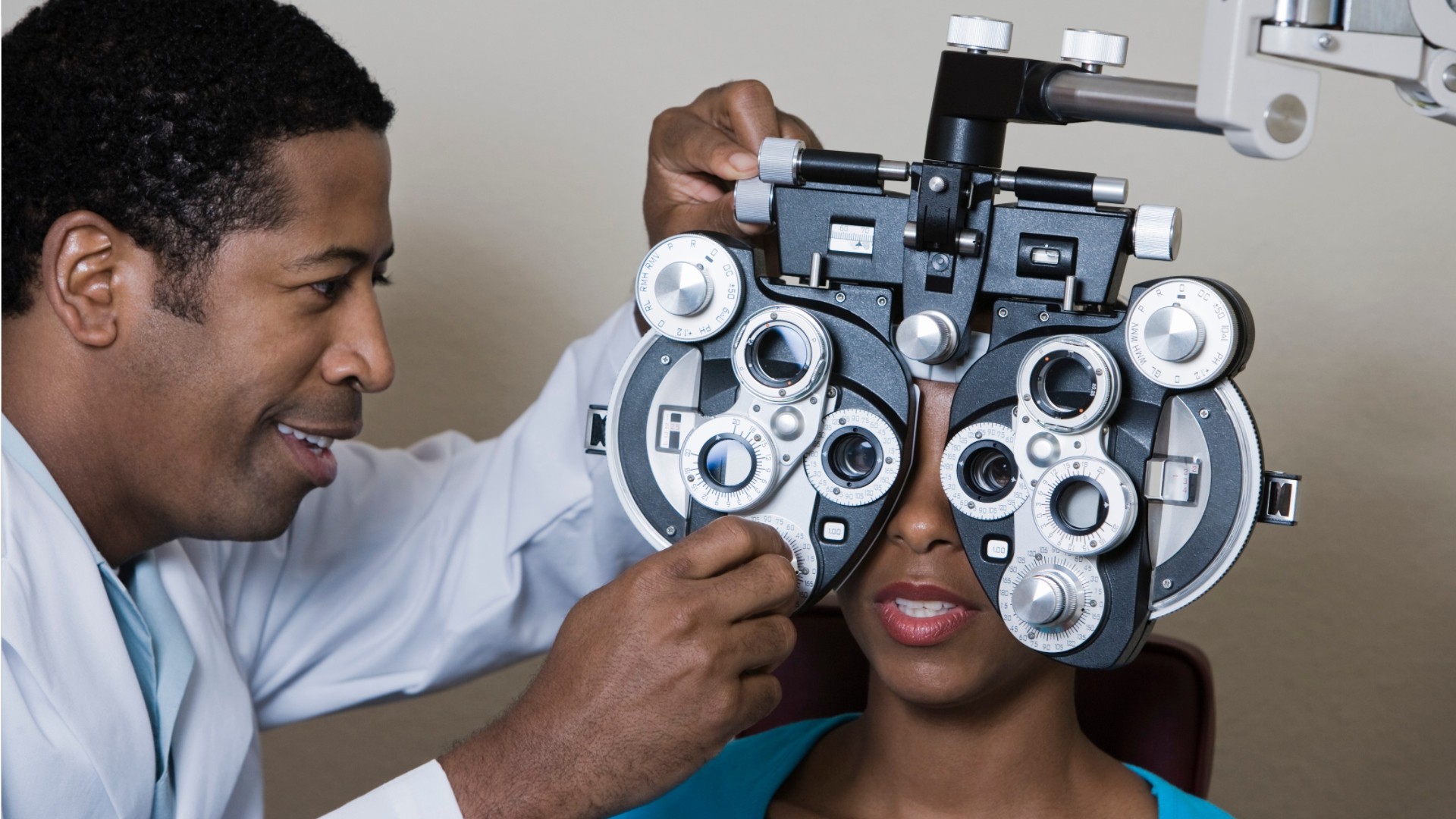The Importance of Regular Examinations with an Eye Doctor Optometrist
The Importance of Regular Examinations with an Eye Doctor Optometrist
Blog Article
Checking Out the Most Recent Technical Improvements in Optometry and What They Mean for Eye Doctors
In the ever-evolving area of optometry, recent technical innovations are improving just how practitioners approach eye care. From the precision of Optical Comprehensibility Tomography to the nuanced insights offered by AI-driven diagnostic devices, these innovations are establishing new criteria in individual evaluation and treatment. Teleoptometry is positioned to redefine accessibility, making sure that know-how transcends geographical limitations. As these innovations permeate the practice, optometrists are encountered with the challenge of welcoming these tools to improve patient results. The question continues to be: just how will these technical shifts redefine the functions and responsibilities within the profession?
Developments in Diagnostic Tools
Progressing the area of optometry, advancements in diagnostic devices have actually changed the method eye care experts evaluate and detect aesthetic disabilities and ocular conditions. The past years has actually seen considerable technological innovations, making it possible for more precise and thorough examinations.
One more secret technology is the intro of advanced corneal topography systems, which map the surface curvature of the cornea with accuracy. These tools are especially valuable for fitting contact lenses and identifying corneal conditions. Digital retinal imaging has transformed standard ophthalmoscopy, offering comprehensive, scenic sights of the retina that facilitate extensive aesthetic examinations.
The growth of wavefront aberrometry has actually likewise been essential, enabling the evaluation of refractive errors with unrivaled precision (Eye Doctor). This modern technology helps in personalizing restorative lenses and boosting medical outcomes for refractive surgeries. Collectively, these analysis advancements equip eye doctors to supply remarkable client treatment, ensuring early treatment and customized treatment methods, ultimately improving aesthetic wellness results
AI in Person Administration
Structure on the structure of advanced diagnostic tools, the consolidation of synthetic knowledge (AI) in client administration represents a transformative jump for optometry. AI systems are progressively employed to enhance efficiency, precision, and customization in client treatment.
Additionally, AI-driven platforms assist in streamlined individual communications and administrative procedures. Automated organizing, virtual consultations, and personalized follow-up plans not just boost patient fulfillment yet additionally optimize time administration for professionals. These systems can triage patients based upon the necessity of their problems, making certain that those in critical demand obtain timely interest.
Moreover, AI improves decision-making by supplying eye doctors with evidence-based recommendations and therapy paths. By incorporating information from electronic wellness documents, AI devices provide understandings that inform professional choices, reducing the danger of errors and enhancing individual end results. As AI continues to progress, its function in patient management will likely expand, reshaping the landscape of optometric treatment.
Breakthroughs in Retinal Imaging
In the world of optometry, retinal imaging has witnessed exceptional technological improvements that are enhancing analysis abilities and individual care. Developments such as Optical Coherence Tomography (OCT) and fundus digital photography have actually reinvented just how eye doctors analyze the retina and envision. OCT, specifically, provides high-resolution, cross-sectional photos of the retina, enabling the comprehensive examination of its layers. This capability is invaluable for early discovery and management of problems like glaucoma, diabetic person retinopathy, and age-related macular deterioration.
Boosted imaging modalities like OCT angiography are further refining diagnostic precision. Eye Doctor. Such innovations facilitate the recognition of minute retinal changes that might symbolize illness development.
Moreover, developments in man-made knowledge are enhancing retinal imaging by making it possible for automated evaluation of large datasets. These systems help optometrists in recognizing patterns indicative of pathology, thereby improving diagnostic accuracy and effectiveness. Collectively, these innovations are transforming retinal imaging into a keystone of modern-day eye treatment, boosting results and expanding therapeutic opportunities.
Teleoptometry's Growing Duty
Teleoptometry is increasingly ending up being a crucial part of eye treatment, driven by innovations in digital interaction and diagnostic devices. As optometry accepts digital transformation, teleoptometry assists in remote assessments, allowing optometrists to prolong their solutions beyond conventional boundaries. This is especially valuable in country and underserved areas where accessibility to specialized eye treatment is often restricted. By leveraging high-resolution video conferencing and advanced retinal imaging, optometrists can conduct extensive eye exams from afar, guaranteeing prompt medical diagnosis and treatment.
The integration of expert system (AI) further improves teleoptometry, allowing the evaluation of aesthetic information and assisting in the detection of eye problems such as glaucoma and diabetic person retinopathy. AI-powered algorithms can swiftly interpret complicated imaging information, providing optometrists with valuable understandings that reinforce clinical decision-making.
In addition, teleoptometry supports continuity of care with smooth integration with digital health documents (EHRs), enabling eye doctors to keep thorough individual histories. This makes certain that people get constant and tailored care even when talking to different professionals.
Despite these advantages, obstacles stay, consisting of making sure information safety and managing patient expectations. Nonetheless, teleoptometry stands for a substantial stride towards more accessible, efficient, and patient-centered eye care. As modern technology advances, its duty is positioned to expand further.

Future Patterns in Eye Care
A myriad of ingenious fads is readied to reshape the future of eye care, driven by technological developments and the advancing requirements of clients. One significant fad is the integration of site here expert system (AI) in diagnostics, which assures to improve the accuracy and effectiveness of eye assessments. AI formulas can evaluate large amounts of information from retinal photos, potentially spotting problems like diabetic person retinopathy and glaucoma earlier than conventional methods.
In addition, customized medicine is gaining grip in optometry, with hereditary testing informing customized treatment plans. This strategy aims to maximize individual outcomes by customizing interventions to specific genetic accounts. Wearable innovation, such as wise get in touch with lenses, is additionally imminent, supplying real-time surveillance of intraocular pressure or glucose degrees, therefore offering constant understandings into systemic and ocular health and wellness.
The adoption of enhanced reality (AR) and digital reality (VR) in training and patient education and learning is one more arising fad. These technologies use immersive experiences that can improve understanding and skills both for clients and eye doctors. As these patterns advance, optometrists must remain abreast of technological innovations to provide innovative treatment, guaranteeing enhanced person results and contentment in the dynamic landscape of eye treatment.
Final Thought

Collectively, these analysis improvements equip optometrists to supply remarkable patient care, making certain very early intervention and tailored treatment strategies, eventually enhancing visual health end results.

As these technologies continue to progress, eye doctors have to adapt and incorporate them right into method, inevitably enhancing workflow performance and elevating the criterion of eye care delivered to clients.
Report this page